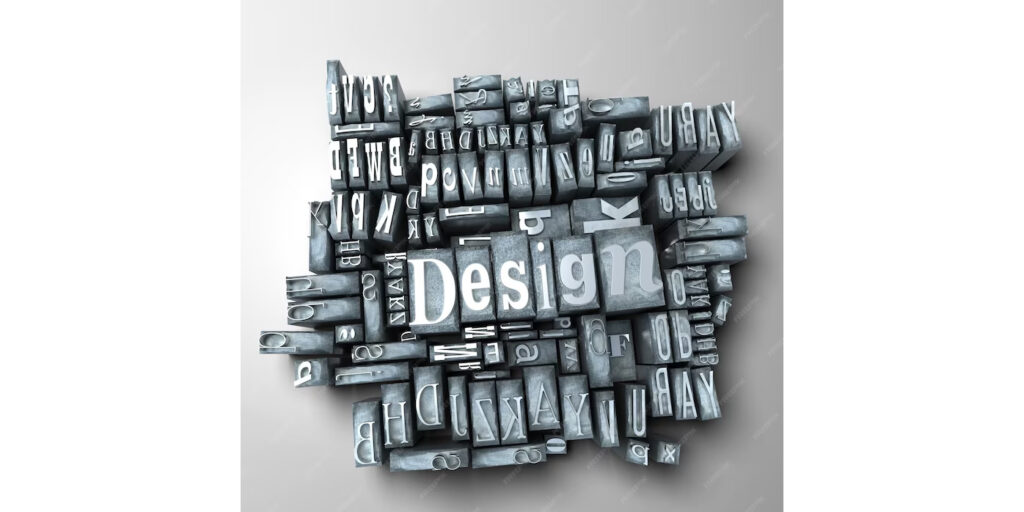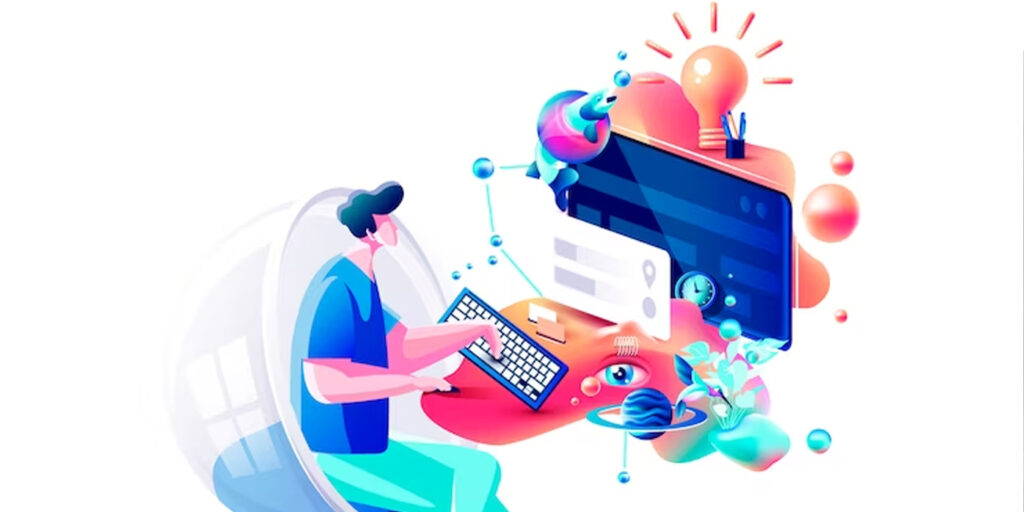8 Important Best Graphic Design Ideas that every designer

Best Graphic design is an art form that uses both creativity and functionality to graphically communicate ideas, thoughts, and information. Every designer should endeavor to develop designs that interest buyers while also efficiently communicating the intended message. One idea is to prioritize simplicity and minimalism. By removing outside elements, designers may create clean, visually appealing designs that are simple for audiences to understand and interact with.
Another excellent idea is to experiment with typeface. Typography is important in graphic design because it may elicit different emotions and express distinct tones. Designers can experiment with different fonts, sizes, and arrangements to create distinct and impactful designs that stand out. In addition, including relevant imagery can improve the overall message of a design.
The best graphic design concepts frequently center on simplicity, typography, and important images.
How do you choose and pair typefaces to generate visually appealing typography in your designs?
Choosing and incorporating typefaces for visually pleasing typography requires consideration of various elements, including contrast, harmony, mood, and readability.
- Understand the objective and Audience
Before selecting typefaces, consider the objective of your design and who your intended audience is. Different typefaces elicit different emotions and appeal to certain groups.
- Identify principal and Secondary Typefaces
Select the principal typeface for headers, titles, and significant content. Next, select a secondary typeface for body text or supporting material.

- Consider Contrast
Using different typefaces helps to generate hierarchy and visual appeal. To achieve balance, pair a bold, eye-catching typeface with a simpler, more neutral one.
- Match the Mood
Consider the mood or tone you wish to communicate. Serif typefaces, for example, frequently convey a sense of antiquity more expertise, whereas sans-serif typefaces are more modern and clean.
How can minimalism be used effectively in best graphic design to improve visual communication?
In generating concepts, graphic designers should keep many core principles in mind in order to make sure all their creations are successful, visually appealing, and effectively communicate the desired message.
Typography
Typography is the art and skill of arranging type so that written text is legible, and visually appealing when exhibited. Understanding typography concepts including font selection, hierarchy, spacing, and alignment is essential for efficient communication in graphic design.
Composition
Composition is the arrangement of parts within a design. A well-balanced design uses components like text, graphics, and negative space to achieve visual harmony and direct the viewer’s eye across the layout. The rule of thirds, balance, contrast, and emphasis are all useful principles for creating visually appealing compositions.
Best Graphic Design Color Theory
Color plays an important function in transmitting emotions, creating hierarchy, and creating visual interest in designs. Graphic designers should be well-versed in color theory, which includes ideas like the color wheel, color harmony, contrast, and the psychological affects of various hues on the spectator.
Consistency and Branding
Consistency is essential for creating a strong brand identity and ensuring that all design aspects work together seamlessly. To ensure uniformity of brand through different devices and platforms, graphic designers should follow brand standards, that involve color schemes, typeface selections, and design preferences. Consistent branding fosters trust and awareness among the audience over time.
Creating Memorable Brand Identity through Best Graphic Design
Developing a memorable brand identity through graphic design is critical for building a strong connection with your audience and standing out in a competitive market.


Understand your Brand in best Graphic Design
Before getting into design, make sure you understand your brand’s values, objective, target demographic, and unique selling behaviors. Your brand identity should be consistent with these elements.
Create a Distinctive Logo
Your logo is the cornerstone of your brand identity. It should be simple, memorable, and versatile. Consider the use of color psychology and typography to evoke the desired emotions and perceptions.
Tell Your Story
Use design elements to convey your brand story and values. Whether through imagery, color schemes, or typography choices, ensure that every aspect of your design reflects the essence of your brand.
Professional Execution
Invest in professional graphic design expertise to ensure high-quality execution of your brand identity. A polished and well-executed design enhances credibility and reinforces brand perception.
How do graphic designers successfully include storytelling aspects into their designs?
Graphic designers incorporate storytelling into their designs by thoroughly understanding the brand’s narrative. They use visual features such as metaphors and chronological layouts to help viewers follow the story.
Characters and symbolism offer dimension, while interactive elements in digital design increase engagement. Throughout the process, designers evaluate the audience’s point of view, ensuring that the tale is relevant to their experiences.
Feedback from stakeholders and users helps to enhance the design, ensuring that the storytelling impact is effective. Finally, graphic designers create visually appealing designs that engage people and leave a lasting impression about the brand’s story.
How Graphic Designers Can Promote Eco-Friendly Practices
Graphic designers can encourage environmentally friendly practices by using sustainable materials such as recycled paper, designing efficiently to save waste, and opting for digital platforms over printed goods when practical. They can also educate clients and colleagues on the environmental impact of design decisions and promote eco-friendly solutions in their projects.
Practical Design Practices for Graphic Designers
Graphic designers should prioritize functionality and user experience, maintain consistency in branding elements, use grid systems for layout organization, ensure readability through appropriate typography choices, and optimize designs for various platforms and devices. Additionally, maintaining current on industry trends and software improvements allow designers to provide effective and visually appealing solutions.

Integrating Sustainability into the Design Process
Integrating sustainability into the design process entails taking into account the environmental, social, and economic implications at each level. This involves using environmentally friendly materials, reducing waste, optimizing energy consumption, and planning for lifespan. Collaborating with clients to prioritize sustainable goals, completing lifecycle assessments, and remaining current on sustainable design principles are all necessary stages in designing environmentally responsible designs.
The Creative Process Behind Graphic Design
Graphics design’s creative method entails understanding customer needs, conducting research, brainstorming ideas, producing designs, getting feedback, and completing the project. Designers begin by learning about the project and its intended audience, then produce thoughts and translate them into visual elements. Client or colleague feedback helps to develop the design, ultimately resulting to the final product. This iterative method produces effective and visually appealing outcomes.


Key Stages of the Graphic Design Process
The key stages of the graphic design process include research, concept development, design creation, feedback and revision, and finalization. These stages involve understanding client needs, generating ideas, creating visuals, refining designs, and delivering the finished product.
Approaches to Brainstorming and Ideation
When brainstorming ideas for graphic design, you can work alone or with a group. Concept generation techniques include sketching, making mood boards, and mind mapping. Research, nature, and private events can all serve as sources of ideas for creativity. Revisiting and refining concepts through trial and error is critical to discovering effective design solutions.
Perspectives on Personal Work and Creative Process
Personal work and the creative process in graphic design are highly subjective. They represent individual perspectives, passions, and inspirations. Personal projects provide design a an opportunity for self-expression and experimentation, allowing them to experiment with new approaches or concepts. The creative process is a voyage of discovery, in which ideas evolve and concepts emerge via experimentation, iteration, and reflection.
Optimizing Graphics for Online Platforms
To optimize graphics for online platforms, resize images for faster loading, utilize web-friendly formats such as JPEG or PNG, and make sure they work across devices. Include informative metadata, such as alt text and pertinent file names, to improve accessibility and search engine exposure. Prioritize fast loading speeds and responsive design to improve the user experience across all devices and screen sizes.
Challenges for Digital Graphic Design.
Considerations for digital graphic design include designing for different screen sizes and resolutions, optimizing graphics for fast loading times, ensuring connection across devices and browsers, including interactive elements when appropriate, and prioritizing user experience through intuitive navigation and accessibility features. Additionally, following brand guidelines and keeping consistency is critical.

Optimization Techniques for Different Platforms
Graphic improvement strategies entail customizing designs to meet the characteristics of each platform, such as resolution and aspect ratio. Furthermore, compressing photos without sacrificing quality, using vector graphics whenever practical, and optimizing typography for readability on various devices all help to ensure successful design presentation across several platforms.
Tips for Enhancing User Experience in Digital Environments
To improve the user experience in digital settings, simplify navigation, make content easily accessible, and ensure it is readable on all devices. Use clear headlines, user-friendly menus, and responsive design. Limit distractions, improve loading speeds, and provide useful feedback on user activities. Prioritize accessibility to ensure that everyone can use and understand your website or app.
Harnessing the Influence of Psychology in Best Graphic Design
Best Graphic design uses psychological concepts to elicit emotions, communicate messages, and affect behavior. Colors, typefaces, layout, and imagery are intentionally chosen to elicit the desired psychological emotions among viewers. Understanding human perception and cognition allows designers to create designs that connect with audiences on a subconscious level, increasing engagement and communication effectiveness. Psychology thus acts as an effective tool for shaping the impact of visual design.
User Psychology's Role in Effective Best Graphic Design
Psychology is important in good graphic design since it guides color, typeface, or style decisions in order to elicit desirable feelings and behaviors in viewers. Understanding human perception and cognition enables designers to develop visually appealing and impactful designs that effectively transmit messages and connect with their consumers.
Leveraging Psychological Principles to Influence Behavior
Using psychological principles in graphic design enables designers to strategically impact behavior. Understanding how colors, font, and layout influence emotions and perceptions allows designers to create designs that elicit specific behaviors or responses from viewers. This method ensures that graphic designs properly deliver messages that motivate intended audience behaviors.
Examples of Designs Incorporating Psychological Insights
Graphic designers frequently use psychological insights to impact perception and behavior. Color combinations to elicit emotions, font for readability and emotional effect, and graphic hierarchy to direct attention. Furthermore, social proof components involving comments and user counts, as well as subtle nudges in user interface design, use psychological principles to motivate viewers to take specific actions.
Conclusion
To summarize, the field of graphic design is filled with limitless options, but certain concepts stand out as essential for every designer. From the strength of minimalism to the importance of understanding color theory and typography trends, each idea provides significant insights and approaches for improving design work. Creating distinctive brand identities, combining visual storytelling, and leveraging psychology all enhance the effect of designs. The creative process, from sketch to screen, acts as a guiding framework, while creating for digital platforms and pushing boundaries in graphics demonstrate the changing landscape of graphic design. Finally, sustainability emerges as an important factor, encouraging designers to use environmentally friendly approaches. Designers may create significant, compelling, and visually attractive designs that resonate with audiences and make a lasting impression if they embrace these ideals and continue to innovate.


